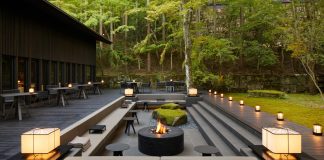Look after Bougainvillea Plant: Suggestions for Vibrant Colours and Lush Growth
Bougainvillea plants are well-known for his or her vibrant colours and plush growth, which makes them a preferred selection amongst gardeners who need to add a tropical feel to their landscapes. These resilient plants can thrive in various climates, but they particularly flourish in warmer, drier regions. With proper conditions and care, bougainvillea can produce a powerful display of flowers almost year-round.

Caring for these plants involves understanding their growth patterns and flowering cycles. Bougainvillea is available in quite a few varieties, each boasting different colours of bracts—modified leaves that surround the plant’s actual flowers—which might range from vivid purples and fiery reds to soft pinks and oranges. When planting bougainvillea, it’s essential to make sure it receives enough sunlight, as that is crucial for encouraging the plant to bloom abundantly.
Successful cultivation of bougainvillea also requires attention to watering practices and the style of soil used. These plants prefer to be kept on the drier side, reflecting their tolerance for drought conditions typically present in tropical climates. When cared for appropriately, bougainvillea is usually a low-maintenance yet extremely rewarding addition to any garden, providing a spectacular and ongoing splash of color.
Choosing the Right Bougainvillea

Before adding a splash of color to your garden with bougainvillea, understanding the variety of sorts and the way they fit into your local climate is crucial for garden success.
Varieties and Colours
Bougainvillea plants are available in a stunning array of colours, including red, pink, yellow, white, purple, and orange. Each color is related to multiple varieties, with some being more common than others. For example, ‘Barbara Karst’ is renowned for its vibrant red bracts, while ‘California Gold’ is one in all the few to boast golden-yellow blooms.
Some popular varieties by color include:
- Red: ‘Barbara Karst’, ‘Rosenka’
- Pink: ‘Raspberry Ice’, ‘Singapore Pink’
- Yellow: ‘California Gold’, ‘Sundown Orange’
- White: ‘Miss Alice’, ‘White Stripe’
- Purple: ‘Recent River’, ‘Royal Purple’
- Orange: ‘Sundown Orange’, ‘Afterglow’
When choosing bougainvillea, it’s essential to contemplate the mature size of the plant, as some can grow quite large, while others remain compact and manageable.
Selecting Suitable Bougainvillea for Your Climate
Bougainvilleas can thrive in hardiness zones 9 to 11, but they require specific temperatures to flourish. They are perfect for gardeners who live in warmer climates corresponding to some parts of Asia, in addition to many parts of California and South America, where they could be planted directly in the bottom. Nonetheless, in regions with cooler climates, it’s best to grow bougainvilleas in containers that could be moved indoors during cold weather.
Temperature guidelines:
- Optimal Growth: Bougainvilleas prefer temperatures that stay consistently above 70°F (21°C).
- Winter Care: They will tolerate short periods where temperatures dip right down to 30°F (-1°C), but ideally, they must be kept in environments above 50°F (10°C) to stop frost damage.
At all times check the precise variety’s tolerance to temperature and the local climate conditions to make sure your bougainvillea flourishes year-round.
Planting Bougainvillea

Planting bougainvillea requires careful site selection and proper timing to be certain that the colourful plant thrives. Full sun exposure and well-draining soil are critical aspects to contemplate.
Preparing the Planting Site
Sunlight and Location: Discover a location that receives full sun for at least 6 hours every day. Bougainvillea performs best after they can bask within the sun’s rays, making them ideal for sunny partitions or fences. Ample sunlight ensures the perfect flowering.
Soil Conditions: Bougainvilleas require well-draining soil to stop root rot. If the native soil is dense, augment it with sand or gravel to enhance drainage. It’s vital that bougainvillea is planted in an area where the soil drains quickly, as standing water could be detrimental.
Planting Time and Process
Optimal Season: The most effective time to plant bougainvilleas is in early spring after the specter of frost has passed. This enables the plant to ascertain itself before the height growing season.
Planting Steps:
- Dig a hole as deep as the foundation ball and twice as wide.
- Gently tease out the roots in the event that they are pot-bound.
- Place the plant in the outlet, ensuring it’s at the identical depth it was within the container.
- Backfill the outlet with soil and pat down firmly.
- Water well to settle the soil across the roots.
Containers and Pots
Container Selection: When planting in containers, be certain that pots are large enough to accommodate the foundation system. A pot with a diameter not less than as wide because the plant’s height is good.
Potting Mix and Drainage: Use a high-quality potting mix that gives good drainage. Be certain containers have ample drainage holes to permit excess water to empty freely.
By selecting the correct location with loads of sunlight, preparing the soil for optimal drainage, and listening to the planting time, gardeners will create the perfect environment for planting bougainvillea. When choosing containers, selection and preparation are equally essential, as pots provide the needed support for growth and health of the bougainvillea.
Caring for Bougainvillea

Successful bougainvillea care requires understanding its needs for sun exposure, moisture balance, and seasonal adjustments. By maintaining the correct conditions, one can ensure vibrant growth and flowering.
Watering and Moisture
Bougainvilleas require a balance in moisture; they thrive in arid conditions but need regular watering throughout the blooming phase. It’s crucial to avoid overwatering, as this may result in root rot. The soil must be allowed to dry out between watering sessions, providing the plant with deep watering periodically to make sure a powerful root system.
Fertilization and Soil Nourishment
Fertilizing bougainvillea is important for its vibrant growth. They perform best with regular applications of a balanced, all-purpose fertilizer at half the traditional concentration throughout the growing seasons, typically spring and early summer. Complementing with compost can encourage healthier blooms.
Pruning and Maintenance
Regular pruning maintains a bougainvillea’s shape and promotes latest growth. After the blooming cycle, they must be pruned to remove dead wood and control their size. One should wear gloves to guard against the thorns and use sharp pruning shears for clean cuts. Pruning can be a chance to coach the plant right into a desired form.
Pest and Disease Management
Bougainvilleas can attract pests corresponding to aphids and mites. Keeping an eye fixed out for infestations and treating them promptly with appropriate methods can protect the plant. Good airflow and proper spacing can reduce the danger of diseases. If symptoms of infection appear, they must be addressed quickly to stop spread.
Overwintering and Temperature Management
In regions with cooler winters, bougainvilleas have to be protected against frost. If planted in pots, they could be moved indoors to a well-lit spot. In-ground plants may have protective coverings. They’re evergreen in warm climates but may drop leaves when temperatures dip, necessitating a discount in watering throughout the winter months.
Propagation and Training

The successful cultivation of bougainvillea involves understanding the intricacies of propagation and the principles of coaching this vigorous vine. Through reliable techniques for producing latest plants and guiding their growth, gardeners can showcase the striking fantastic thing about bougainvillea in a wide range of settings.
Propagating Bougainvillea
To propagate bougainvillea, one begins by choosing healthy stems from a longtime mother plant. These stems must be semi-woody—flexible yet firm—and roughly 6-8 inches in length. The propagation process is often done in spring when plant energy is high.
- Cuttings: Take cuttings from the mother plant, ensuring each has several nodes. Remove flowers and most leaves to direct energy towards root development.
- Rooting hormone: Apply a small amount of rooting hormone to the cut end of the stem. This promotes the event of roots and increases the possibility of successful propagation.
- Planting: Place the treated cut end right into a container full of well-draining soil, burying it about 1 ½-2 inches deep.
Consistent moisture and heat are required for the cuttings to root properly, which might take just a few months. One can ensure a super environment for rooting through the use of a heated propagator or keeping the soil evenly moist and covering the pots with plastic to retain humidity.
Training Bougainvillea
Training bougainvillea involves directing the expansion of the vine to attain a desired shape and fullness. As a woody vine, bougainvillea could be guided to climb trellises or form dense shrubs, depending on the gardener’s design plans.
- Support structures: Offer support structures like trellises or wires to permit the vine to climb. Ensure they’re sturdy, as bougainvillea can turn out to be heavy with growth.
- Pruning: Regular pruning encourages bushier growth, prompts more flowers, and helps maintain the vine inside its support structure. Pruning is best done after a flowering cycle, as bougainvillea blooms on latest growth.
It is helpful to begin training bougainvillea while it’s young and more pliable, which allows for easier shaping of the vine. Because the plant matures, it becomes more rigid and difficult to govern without damage.
Landscape and Design Uses

Bougainvillea is a vibrant and versatile plant that may transform any landscape or garden space with its lush green leaves and vividly coloured bracts that usually are mistaken for flowers. With proper care, this evergreen plant can offer a spectacular display almost year-round, especially in the summertime.
Incorporating Bougainvillea in Your Garden
Bougainvillea’s cascading masses of colourful bracts make it a surprising addition to garden landscapes. They could be trained to climb on partitions and fences, adding a Mediterranean or tropical feel to the environment. Varieties like ‘Barbara Karst’ can rapidly cover a trellis with vivid pink blooms. Ensure sufficient space is given for these vigorous growers to avoid crowding and to showcase their beauty.
Creative Container Ideas
Containers and hanging baskets are excellent decisions for adding bougainvillea to your house without the commitment of a everlasting spot within the garden. When potted, they could be placed on patios or balconies, where their bracts drape gracefully over the perimeters. Ensure these sun-loving plants receive ample daylight and use a well-draining soil mixture to maintain their roots healthy.
Growing Bougainvillea as a Tree or Shrub
While commonly seen as a climbing vine, bougainvillea could be cultivated as a standalone tree or shrub, offering flexibility in garden design. With consistent pruning, gardeners can shape these plants into formal or informal styles, maintaining a compact, tree-like shape or a more natural, shrub-like appearance. Its evergreen nature ensures that it stays a focus even when not in bloom.
Special Considerations

When caring for bougainvillea plants, it’s essential to contemplate their vigorous growth habit, the presence of thorns, and their seasonal growth patterns. Being attentive to these specific aspects ensures the plants are handled safely and thrive all year long.
Handling Thorns and Safety Measures
Bougainvilleas are known for his or her sharp thorns which might make handling the plants a challenge. Gardeners should wear thick gloves and use long-handled tools when pruning to guard against scratches and injury. It’s critical to coach anyone who interacts with the plant about these safety measures to stop harm.
Understanding Seasonal Growth Patterns
Bougainvilleas exhibit robust growth primarily in spring and summer, aligning with their preference for direct sunlight and heat. In fall, growth may slow because the plant prepares for dormancy. Understanding this seasonal pattern is crucial for timing activities corresponding to planting, pruning, and fertilizing to encourage health and vigor while avoiding damage to latest growth.
Addressing Common Concerns
Gardeners often encounter concerns with bougainvillea care, including wilted or dead foliage and an absence of flowers. To deal with these issues:
- Make sure the plant can tolerate the quantity of direct sunlight it receives; bougainvilleas require full sun for optimal bloom.
- Regulate watering and avoid overwatering, as bougainvilleas prefer a drier climate.
- Prune dead or overgrown branches to advertise latest growth and flowering; this maintenance should occur after the flowering season to avoid cutting off latest buds.
Bougainvillea Botanical Insights
Bougainvillea, a vibrant and versatile genus, is well-regarded for its showy bracts and hardy nature, thriving notably in Southeast Asia and South American regions like Brazil.
Exploring the Bougainvillea Genus
The Bougainvillea genus is a bunch of thorny ornamental vines belonging to the Nyctaginaceae family. This plant group is native to South America, showcasing its most distinguished presence in Brazil. Bougainvilleas are known for his or her brightly coloured and paper-thin bracts which are sometimes mistaken for flowers. In point of fact, these magenta or variously hued bracts are modified leaves, designed to guard the tiny true flowers nestled inside.
Other than the enduring magenta, these plants exhibit a spectrum of colours, including shades of pink, red, yellow, orange, and white. While commonly regarded as perennials, these plants behave as annuals in regions experiencing colder climates. They will adjust to a big selection of soils but prefer a well-draining type with barely acidic pH levels, typically between 5.5 – 6.0.
Comparison with Similar Plants
Bougainvilleas often draw comparison with other members of their Nyctaginaceae family, corresponding to the Poinsettia. Each plants are prized for his or her striking modified leaves, that are commonly known as flowers. Nonetheless, bougainvilleas are primarily vining plants, which could be trained along trellises or left to cascade as a ground cover. In contrast, poinsettias are typically shrubs and an iconic symbol of the festive season.
The care requirements for bougainvilleas are much like other South American natives: they demand full sun and minimal watering once established, underscoring their drought-resistant trait. Bougainvilleas differentiate themselves through their exceptional versatility and capability to flourish in various environments, from coastal regions to urban settings, making them favorites amongst gardeners and landscapers.

Ceaselessly Asked Questions
The next addresses common inquiries related to planting, growing, and caring for bougainvillea, providing specific guidance for every concern.
What are the optimal conditions for planting bougainvillea indoors?
For indoor planting, bougainvillea requires a location that receives abundant sunlight for not less than 5-6 hours day by day. It’s essential to make sure good air circulation and to make use of well-draining soil to duplicate the plant’s natural habitat.
What steps should I follow to successfully plant and nurture bougainvillea in containers?
When planting bougainvillea in containers, select a pot with sufficient drainage holes and use soil that gives excellent drainage. Regular watering that permits the highest inch of soil to dry out between intervals is crucial for healthy growth.
Are you able to explain the technique of propagating bougainvillea from cuttings?
To propagate bougainvillea from cuttings, take a 6-inch section of healthy stem, remove the lower leaves, and dip the tip in rooting hormone. Plant it in a pot with moist potting mix, and maintain a warm environment until roots develop.
What special care do bougainvillea plants require throughout the winter season?
During winter, bougainvillea plants need protection from frost and require less watering. If indoors, they must be placed in a well-lit area and kept at temperatures above 50°F to stop dormancy.
How can I ensure proper growth of bougainvillea when planting them in the bottom?
For ground planting, bougainvillea requires well-draining soil in a sunny spot. It’s essential to water deeply but infrequently to encourage a powerful root system, and fertilizing throughout the growth season supports vibrant blooms.
What are the perfect practices for encouraging faster growth in bougainvillea plants?
Encouraging faster growth in bougainvillea involves full sun exposure, keeping the soil barely dry between waterings, and providing regular feedings with a high-phosphorus fertilizer to advertise blooming. Pruning after each bloom cycle may also stimulate latest growth and flowers.
Like, Follow, and Subscribe to OutofTownBlog.com on Facebook, Twitter, Instagram, and Pinterest, and Team out Of Town on YouTube for more Philippine Tourist Spots.
Read: 10 Easiest Indoor Plants That Anyone Can Grow
Unlock the world’s wonders with unforgettable journeys tailored just for you! Whether you crave sun-kissed beaches, thrilling adventures, or rich cultural escapes, your dream destination awaits. Enjoy seamless travel with expert tips, exclusive deals, and handpicked experiences that Turn Every Trip into a lifetime memory.










